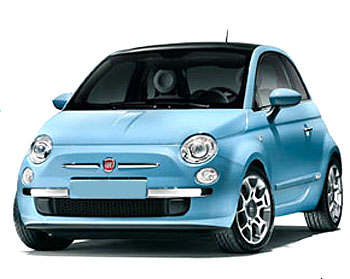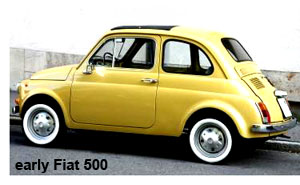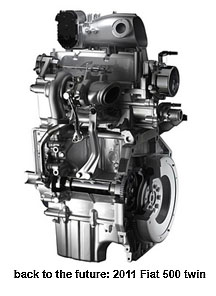 This summer’s most desirable car is not a supercar, like the forthcoming McLaren 12-C or Ferrari FF, but rather a diminutive and fuel-efficient city car that has captured the hearts of motoring journalists around the world; Jeremy Clarkson may not be known for his environmental sympathies, but wrote this week that he would sooner have the £10,000 Fiat 500 TwinAir on his driveway than a £1m Bugatti Veyron.
This summer’s most desirable car is not a supercar, like the forthcoming McLaren 12-C or Ferrari FF, but rather a diminutive and fuel-efficient city car that has captured the hearts of motoring journalists around the world; Jeremy Clarkson may not be known for his environmental sympathies, but wrote this week that he would sooner have the £10,000 Fiat 500 TwinAir on his driveway than a £1m Bugatti Veyron.
The Fiat 500 produces a road tax-evading 95g/km CO2 and a claimed 68.9mpg, but is not powered by batteries or biofuel. The petrol engine fitted to the Fiat 500 TwinAir has shrunk in size, given up two of its cylinders and gained a turbocharger in order to become what the company claims is the greenest in the world.
Fiat 500: Back to the future
 The engine configuration harks back to the original iconic, twin-cylinder Fiat 500 of 1957. In its most basic guise, the TwinAir costs £10,665.
The engine configuration harks back to the original iconic, twin-cylinder Fiat 500 of 1957. In its most basic guise, the TwinAir costs £10,665.
Nissan will next month at the Geneva Motor Show unveil the Micra DIG-S, a car which also achieves 95g/km CO2 and will compete directly with the TwinAir.
A spokesperson for the Environmental Transport Association (ETA) said: “The Fiat 500 TwinAir challenges the view that the greenest cars are rarely desirable – lightweight cars are rewarding to drive, use less fuel and are kinder to the planet.”
| The Fiat 500 TwinAir | |
|---|---|
 |
Kei cars come to Britain
 In Japan, the need for vehicles restricted in size, engine displacement and power in order to bypass tax, insurance regulations and the requirement in some areas that parking space be available before the vehicle is bought, gave rise the Kei car class.
In Japan, the need for vehicles restricted in size, engine displacement and power in order to bypass tax, insurance regulations and the requirement in some areas that parking space be available before the vehicle is bought, gave rise the Kei car class.
Regulations rather than consumer demands gave birth to the Kei car class in Japan, and it is rising petrol prices and road tax breaks for cleaner vehicles that have paved the way for cars like the Fiat 500 TwinAir and the Nissan DIG-S in Britain.
0 Comments View now